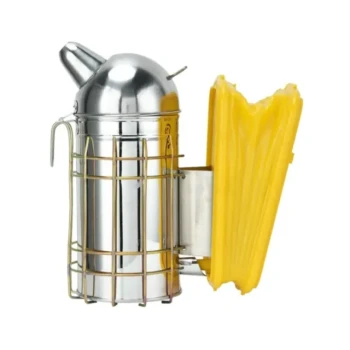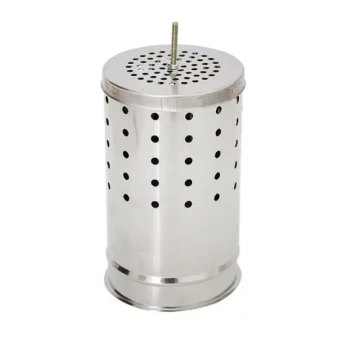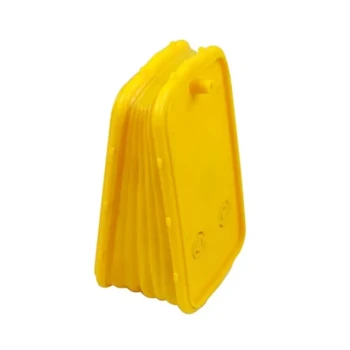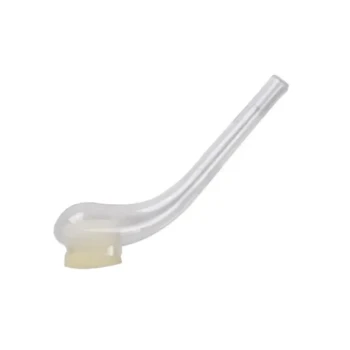In short, the two proper methods for extinguishing a bee smoker are to either suffocate the embers to preserve fuel or to douse the hot contents with water for absolute certainty. Both methods are effective, but they serve different purposes and carry different levels of inherent risk that you must manage.
Choosing how to extinguish your smoker is a decision between convenience and absolute safety. Suffocating the fuel is efficient for reuse, but dousing it with water is the only way to guarantee the fire is completely out and eliminate all risk.
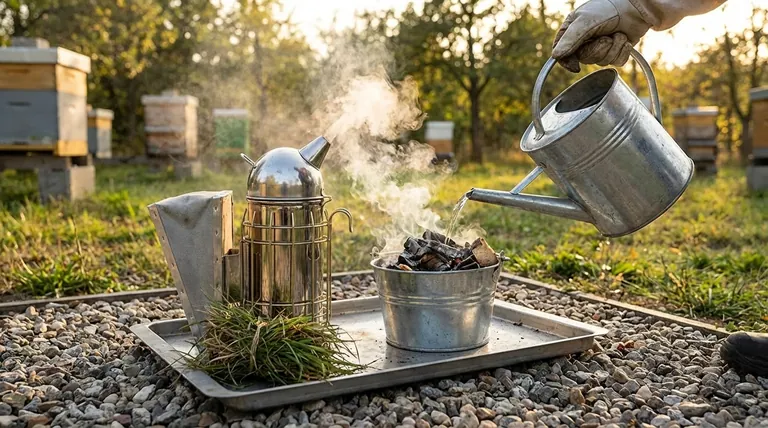
The Core Principle: Breaking the Fire Triangle
A lit smoker contains fuel, heat, and oxygen. To extinguish it, you must remove one of these elements. The methods for putting out a smoker are designed to either remove the oxygen (suffocation) or rapidly remove the heat (dousing).
Why This Matters
A smoker contains smoldering embers that can remain hot for hours. Improperly extinguishing and storing your smoker is a significant fire hazard, especially if it is placed in a shed, vehicle, or near any flammable material.
Method 1: Suffocating the Embers for Fuel Reuse
This method is popular among beekeepers who want to save partially burned fuel for their next hive inspection. It works by cutting off the oxygen supply to the embers.
The Process: Tamp and Plug
First, use your hive tool to tamp down the remaining fuel inside the smoker's chamber. This helps reduce the exposed surface area.
Next, you must block the airflow. Firmly plug the smoker’s spout with a non-flammable or flame-retardant object like a cork, a wad of wet green grass, or a purpose-made smoker plug.
Safe Placement is Critical
Once plugged, lay the smoker on its side on a non-flammable surface. Concrete, gravel, or a patch of bare dirt are all safe options. Never place it on a wooden deck, dry grass, or inside a vehicle until it is completely cold to the touch.
An Alternative: The Airtight Container
Another suffocation technique involves placing the entire smoker inside a sealed, fireproof container like a metal can with a tight-fitting lid.
Some suggest slightly cracking the smoker's own lid before placing it in the container to prevent a vacuum from forming as it cools, which can make the smoker difficult to open later.
Method 2: Dousing with Water for Complete Extinguishing
This is the most foolproof method for ensuring the fire is out. It prioritizes safety above all else by using water to eliminate the heat.
The Process: Empty and Drench
Carefully empty the hot contents of your smoker into a fire-safe location. This could be a designated metal bucket, a fire pit, or directly onto a gravel driveway.
Thoroughly douse the embers with water until you are certain they are completely extinguished and cool.
A Key Precaution
When dumping the contents, be mindful of the small metal grate (also called a fire grid or spacer) at the bottom of the smoker chamber. It can easily fall out with the ash and be lost.
Understanding the Trade-offs and Risks
Neither method is inherently superior; the right choice depends on your situation and risk tolerance.
Risk of the Suffocation Method
The primary risk of suffocation is failure. If the spout is not plugged perfectly or the container is not airtight, enough oxygen may still reach the embers to keep them smoldering. This creates a deceptive fire hazard where the smoker appears to be out but is not.
Downside of the Dousing Method
The dousing method is undeniably safer from a fire prevention standpoint. However, emptying the hot contents can be messy, and you lose any unburnt fuel. There is also the small risk of misplacing the internal grate.
The Universal Hazard: Hot Surfaces
Regardless of the method used, the metal body of the smoker will remain dangerously hot for a significant period. Always handle it with care and ensure it has a safe place to cool down completely before final storage.
Making the Right Choice for Your Goal
After extinguishing the smoker and allowing it to cool, it's good practice to clean out any residue to ensure the lid seals properly for future use.
- If your primary focus is convenience and fuel efficiency: Use the suffocation method, but be extremely diligent about placing the smoker on a non-flammable surface until it is completely cold.
- If your primary focus is absolute safety and peace of mind: Use the dousing method by emptying the contents into a safe spot and extinguishing them thoroughly with water.
- If you are done for the day and storing equipment away: The dousing method is the most responsible choice to eliminate any lingering fire risk before you leave the apiary.
Ultimately, responsible smoker management is a core component of safe beekeeping.
Summary Table:
| Method | Goal | Key Action | Key Risk |
|---|---|---|---|
| Suffocation | Fuel Reuse | Plug the spout to cut off oxygen. | Embers may still smolder if not sealed perfectly. |
| Dousing | Absolute Safety | Empty and drench hot contents with water. | Messy process; potential to lose the internal grate. |
Ensure your apiary's safety with professional-grade equipment from HONESTBEE.
Properly managing your bee smoker is just one aspect of safe and efficient beekeeping. At HONESTBEE, we supply durable, reliable beekeeping supplies and equipment designed specifically for the demands of commercial apiaries and beekeeping equipment distributors. Our wholesale-focused operations mean you get the quality gear you need to protect your investment and maximize productivity.
Contact HONESTBEE today to discuss your equipment needs and discover how our products can support your beekeeping success.
Visual Guide

Related Products
- European Stainless Steel Bee Smoker for Honey Bee Hive
- Stainless Steel Honey Bee Smoker Hive and Honeycomb Smoker for Beekeeping
- Economy Galvanized Beekeeping Honey Bee Smoker for Wholesale
- Premium Traditional Copper Bee Smoker with Bellows
- Electric Bee Smoker European Style Bee Hive Smoker for Beekeeping
People Also Ask
- What are the key benefits of using a bee smoker? Master Hive Inspections Safely and Efficiently
- Can you use too much smoke on bees? The Right Way to Use a Bee Smoker for Calm Inspections
- What are the steps to operate a bee smoker? Master the Art of Gentle Beehive Management
- What are the features of a recommended bee smoker? A Guide to Safety, Durability & Performance
- What are the differences between stainless steel and galvanized steel bee smokers? Choose the Right Smoker for Your Apiary











